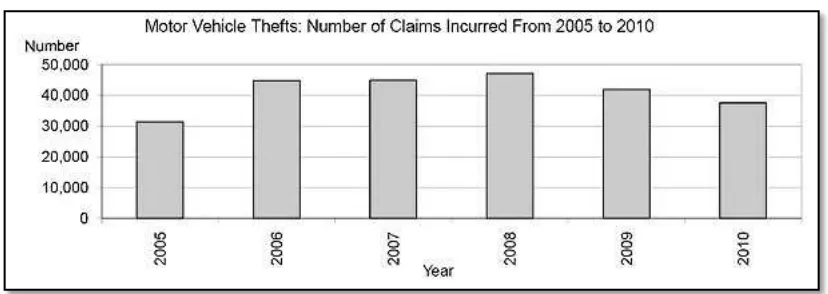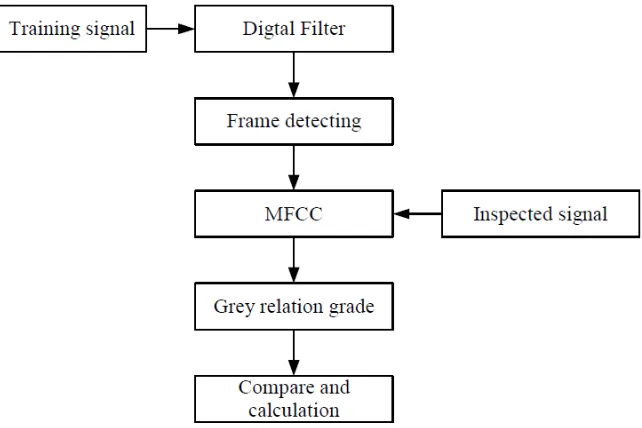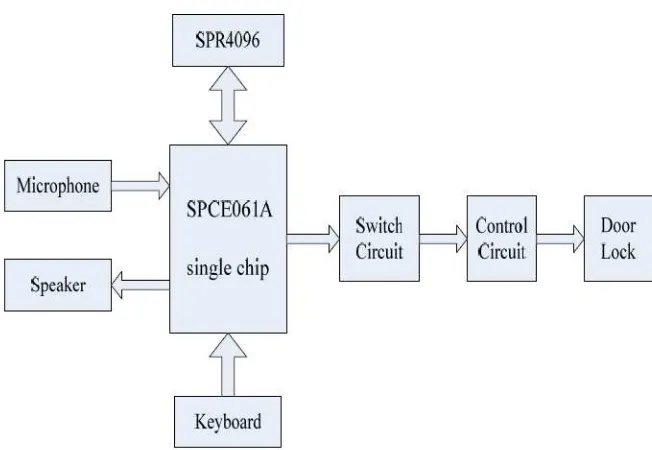VOICE RECOGNITION IGNITION SYSTEM
MARK FIDELIS KENSIN
SUPERVISOR DECLARATION
―I hereby declare that I have read this thesis and in my opinion this report
is sufficient in term of scope and quality for the award of the degree of Bachelor of Mechanical Engineering (Automotive)
VOICE RECOGNITION IGNITION SYSTEM
MARK FIDELIS KENSIN
This Report is presented in partial fulfillment for
Bachelor of Mechanical Engineering (Automotive) with honours
Faculty of Mechanical Engineering University Technical Malaysia Malacca
DECLARATION
―I hereby declare that this report entitled Voice Recognition Ignition System is the result of my own research except as cited in the references‖
iii
DEDICATION
I dedicate this report to my beloved parent Fidelis Kensin
And
Ginuyah Rintingan
Ask and it will be given to you, seek and you will find, knock and the door will be opened to you
ACKNOWLEDGEMENT
First of all, thanks to God on His grace and blessing that gave me the opportunity to complete this report. Special thanks to Proton for suggesting title of the project and gave me the opportunity to do research. In preparing this report, I was communicated with many people such as lecturer, technician, practitioners and other researcher. All of these people have enhanced and contributed towards my knowledge, understanding and thought. Therefore, I wish to express my sincere appreciation to all lectures that have contributed to the completion of this report, especially to my supervisor Dr Noreffendy Tamaldin. All of his encouragement, guidance critics and friendship had helped me a lot upon the completion of this report. I am also very thankful to Mr. Rahman Dwijotomo for his guidance and very useful tips and knowledge that been sharing while working in laboratory. Without their continuous help and support, this report would not been the same as presented here.
In additions, my entire fellow friends also deserve special thanks for their assistance in sharing information, advises, cooperation and knowledge along the research until the completion of this report.
v
ABSTRAK
ABSTRACT
vii
TABLE OF CONTENT
Chapter Content Page
DECLARATION ii
DEDICATION iii
ACKNOWLEDGMENT iv
ABSTRAK v
ABSTRACT vi
TABLE OF CONTENT vii
LIST OF FIGURE xi
LIST OF FIGURE xiii
LIST OF APPENDICES xiv
CHAPTER 1 INTRODUCTION 1
1.1 Background 1
1.2 Problem Statement 2
1.3 Objective 2
1.4 Work Scope 2
1.5 Report Summary 3
CHAPTER 2 LITERATURE REVIEW 4
2.2 Theory 5 2.2.1 The Design of Voice Recognition
System via Grey Relational Analysis
7
2.2.2 Access Control System Based on Voice Recognition
9
2.2.3 Processing of the Voice Signal 10
2.3 Pitch and frequency 10
CHAPTER 3 METHODOLOGY 11
3.1 Methodology Description 11
3.2 Voice Recognition Ignition System Development
12
3.3 Hardware Development 12
3.3.1 Voice Recognition Module 13
3.3.2 Bridge Board 13
3.3.3 Simple DC motor, 5V relay and 9V battery
13
3.3.4 USB Cable and Bread Wire 14 3.4 Voice Train and Algorithm Development 14
3.4.1 Voice Train 15
3.4.1.1 Voice Train Procedure: 16 3.4.2 Algorithm Development 19
3.4.2.1 Algorithm Development Procedure
ix
3.5 Experimental Setup to Test the Voice Recognition Ignition System Functionality
21
3.5.1 Explanation of the experiment 21
3.6 Performance analysis 22
3.6.1 Performance analysis procedure 23 3.6.2 Graph and spectrogram explanation 23
CHAPTER 4 RESULT 25
4.1 Voice recognition ignition system circuit 25 4.2 Result of Performance Analysis for each Sample
Voice
26
4.2.1 Analysis result for sample voice 1: User 1
26
4.2.2 Analysis result for sample voice 2: User 2
27
4.2.3 Analysis result for sample voice 3: User 3
29
4.2.4 Analysis result for sample voice 4: User 4
30
4.2 Overall analysis result of each User Sample Voice and the system response
32
CHAPTER 5 DISCUSSION 33
5.1 Voice Recognition Ignition System Functionality and Security
5.2 Voice Recognition Ignition System working condition
34
5.2.1 Range of pitch to operate the voice recognition ignition system
34
5.2.2 Effect of voice intensity to the voice recognition ignition system performance
37
5.2.3 Effect of voice pulse to the voice recognition ignition system performance
38
5.3 Problem encountered and Solution 39
CHAPTER 6 CONCLUSION AND RECOMMENDATION 41
6.1 Conclusion 41
6.2 Recommendation for future study 42
xi
LIST OF TABLE
TABLE TITLE PAGE
Table 4.1 Analysis summaries for User 1 voice 27 Table 4.2 Summaries of analysis result for User 2 sample voice 28 Table 4.3 Analysis result summary for User 3 sample voice 30 Table 4.4 Analysis result summary for User 3 sample voice 31 Table 4.5 Overall samples voice analysis and the response of the
voice recognition ignition system
32
Table 5.1 Response of the voice recognition ignition system towards each samples voice.
33
Table 5.2 Pitch range of each sample voices 34 Table 5.3 Nearest frequency value between the three Sample Users
and the Real User
35
LIST OF FIGURE
FIGURE TITLE PAGE
Figure 1.1 Statistic of Stolen Vehicle in Malaysia 1 Figure 2.1 Structure of the voice recognition controller via grey
relational analysis
6
Figure 2.2 The frame of the system 8
Figure 2.3 Voice recognition circuit 8 Figure 2.4 The structure of voice signal processing 9
Figure 3.1 EasyVR Shield 12
Figure 3.2 Arduino UNO-R3 Board 13
Figure 3.3 EasyVR Commander V3 environment 15 Figure 3.4 EasyVR Commander guide 1 16 Figure 3.5 Prompt box that appeared after clicking train command
button
17
xiii
Figure 3.11 Graph and spectrogram generated by Praat sound analysis software
23
LIST OF APPENDICES
Appendix Title Page
1 Description and specification of EasyVR Shield 46 2 Schematics circuit of Arduino UNO-R3 Board 47 3 The complete coding that been developed for voice
recognition ignition system
48
4 List of User 1 voice pitch 56
5 List of User 1 voice intensity 59
6 List of User 2 voice pitch 62
7 List of User 2 voice intensity 65
8 List of User 2 voice pitch 68
9 List of User 2 voice intensity 71
10 List of User 2 voice pitch 74
1
CHAPTER 1
INTRODUCTION
1.1 BACKGROUND
Figure 1.1: Statistic of Stolen Vehicle in Malaysia (Source: Persatuan Insurans Am Malaysia, PIAM website)
1.2 PROBLEM STATEMENT
It is known that one of the factors that lead to the vehicle stolen cases is weak security system of a vehicle. A good security system of a vehicle will reduced the probability of the vehicle from being hijacked by irresponsible person and directly will reduced the number of stolen vehicle cases. Hence, vehicles with good security system allow the driver to leave their car in public parking area without worry. Therefore, the development of voice recognition ignition system will enhance the security system of vehicles since the vehicle will only operate by the voice command of the vehicle user.
1.3 OBJECTIVE
The main objective of this research is to develop voice recognition system that can be implemented in vehicles for starting the engine of the vehicle. The voice recognition system must be able to differentiate different frequency of voice for security purpose.
1.4 WORK SCOPE
3
1.5 REPORT SUMMARY
The first section of this report is Chapter 1 which introduces the research background, problem statement, objective and the work scope.
Literature review is in Chapter 2 which about the study of the theoretical background of this research.
The next section is methodology in Chapter 3 which about the list of tools, materials and the procedures that been used along the research process.
Chapter 4 in this report showed the result and finding of this research.
Chapter 5 discusses and explains in detail about the results obtained. This section also discuss about the problem encountered and the solution along the research duration.
CHAPTER 2
LITERATURE REVIEW
2.1 Introduction
Speech is the common method of communication between people. Due to various reasons, the research in automatic speech recognition by machine has attracted a great deal of attention over the past five year. Among the reason that lead to the research of speech recognition by machine is the technological curiosity about the mechanisms for mechanical realization of human speech capabilities and the desire to automate simple tasks inherently requiring human-machine interactions. (̈zturk, N.; ̈n̈zkan, U., 2010), (Juang, 2005)
2.2 Theory
5
In voice recognition system, there are many factors that affect the voice command such as the different pitch and tone of various people. In addition, the emotion, pressure, health status and other environmental changes such as noise also affect the quality of voice command perception. Previous research on conventional voice recognition system found that there are six basic structures in a typical voice recognition system. Among structures including recording, signal endpoint detection, amplification, voice feature extraction and voice model comparison. All of these components enable a system or a machine to interpret the voice command issued (Liu, 2008). The basic principle of voice recognition involves the identification of the voice features, and then followed by the application of different algorithms. The application of various algorithms is to determine the discrepancy between the source and the audio sample in the database (Lai, 2000).
Overall speech sounds are composed of linear combination of sine waves with different frequency. For human voice, the frequency range is in between 300Hz to 3300Hz. It is possible to make an effective sampling with a double frequency value of sound and a higher sampling frequency according to the Nyquist Theorem. In order to recognize the voice expression, the voice must be firstly converting from analog signal into numerical expression, then isolating the real character from the signal and recognizing the obtained information by recognition process. The first stage of the voice recognition process is transmitting the voice expression to the system through a microphone. The voice then converted into a numerical expression and will become ready to be analyzing by suitable method. (Karacı, 2006), (Huang, 2001)
The grey system theory was created by Professor Deng in 1982, and it is applied to the uncertain model system and incomplete information. The relational analysis and model construction can be made by referring to grey system theory. Based on the theory also, the system situation can be understood by using prediction and decision making method. In addition, it can also solve the problem of multi input real system and uncertainty. Most of the voice recognition system that been research by only focusing on the control algorithms and very few were related to grey system theory. In the design of voice recognition controller via grey relational analysis, it covers the mathematical model analysis which is grey relational grade (Hsiu, 2011).
The structure of the voice recognition design in the system featured for this design which used grey rational analysis can be divided into three components. The structure started from the primary platform which PC-based workstation. This first component responsible for the processing of voice signals sampling and filter. The second component is the segmentation of voice using Mel-scale Frequency Cepstral Coefficients (MFCC). The last components is the comparison and computation that using grey rational analysis. The system will identify the closest sample as the result of recognition after comparing the voice sample with the reference database. The overall structure of the voice recognition controller via grey relational analysis is as shown in Figure 2.1 below.
7
2.2.2 Access Control System Based on Voice Recognition
Due to the different purpose and function, the voice recognition system can be classified as speech recognition and speaker recognition. Speech recognition system identify the word that been speak while, speaker recognition system recognize who is speaking. Speaker recognition also can be divided into two types which are relevant to the text and the other is irrelevant to text. The voice recognition system that is relevant to text needs users to pronounce according to the stated contents and then everyone speech model is built up accurately. This types of voice recognition is effective for security because voice identification from user is needed before the system operate. While the voice recognition system that irrelevant to text does not rule the pronunciation contents of the talkers. Speech model for this type of voice recognition is difficult to build but is more convenient and widely used (Han, 2004).
Figure 2.2: The frame of the system (Source: Cui, 2009)
The principal of the voice recognition circuit is that the voice signals are analyzed by the intelligent system after distilling voice. The noises are filtered and only the useful voice signals are distilled through the filter group. The filtered signal then are processed and chosen by calculation match. The voice signal then carried along with the voice datum in the database after processing and analysis. Lastly, the voice recognition performs an output according to the match result (Cui, 2009). Figure 2.3 showed the basic structure of the voice recognition circuit.


